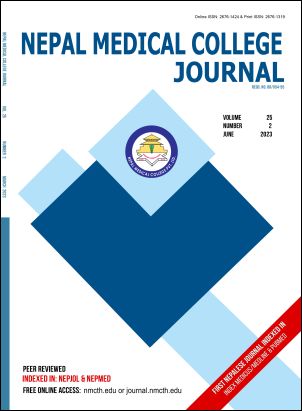Availability, accessibility and affordability of diabetes health care facilities in Latur, India
DOI:
https://doi.org/10.3126/nmcj.v25i2.56042Keywords:
Health care, availability, accessibility, affordability, diabetesAbstract
Despite the enormous burden, diabetes care in the community is still substandard. According to studies conducted in the Latur District, there is a significant gap between recommended and actual diabetes care, which results in poor health outcomes. A cross-sectional survey was undertaken in the Latur District of Maharashtra. A sample of 505 self-reported persons with diabetes from 413 households were interviewed from May to October 2017. The study used total samples of self-reported diabetes for the bivariate and multivariate analyses. Only 19% of respondents reported that they accessed government hospital facilities for treatments of diabetes. Elderly, belonging to SC/ST, working as a farmer/labour, and poor categories accessed government facilities for diabetes treatment. Most of the people could not access healthcare facilities because more than a third of respondents live more than 31km from hospital facilities because of poor transportation, lack of connectivity, and highly unaffordable healthcare expenses and time access to healthcare facilities. The adjusted odds ratios show that after controlling for important background factors find the link between unaffordability, distance, and poor transportation to healthcare institutions. The government and private sector must urgently decentralize healthcare facilities, and the government must enhance the health system by making health check-ups available at sub-centres, PHCs, rural hospitals, and special diabetic departments in the district and sub-district hospitals. Furthermore, the private sector and non-governmental organizations (NGOs) have to take steps to raise diabetes awareness and provide healthcare services at the grassroots level.
Downloads
Downloads
Published
How to Cite
Issue
Section
License
Copyright (c) 2023 Nepal Medical College Journal

This work is licensed under a Creative Commons Attribution 4.0 International License.
This license enables reusers to distribute, remix, adapt, and build upon the material in any medium or format, so long as attribution is given to the creator. The license allows for commercial use.




